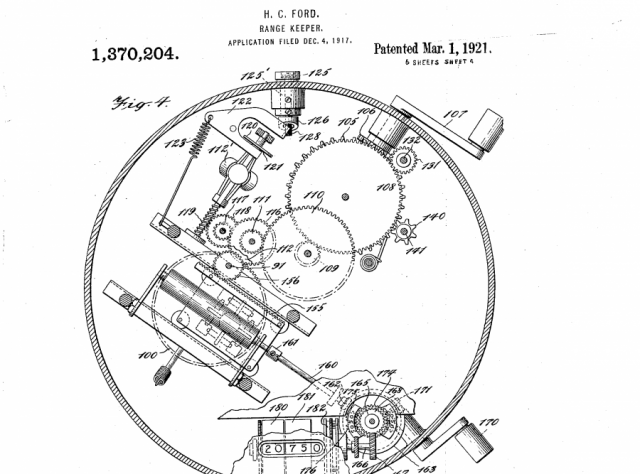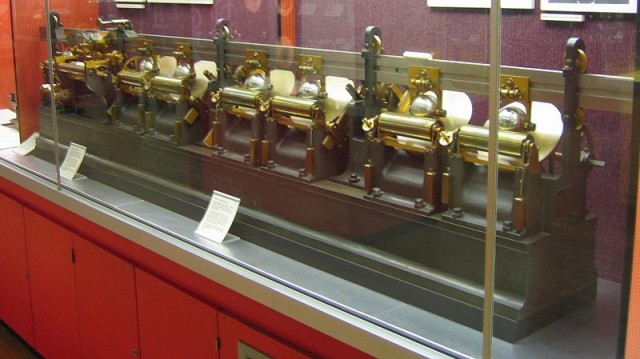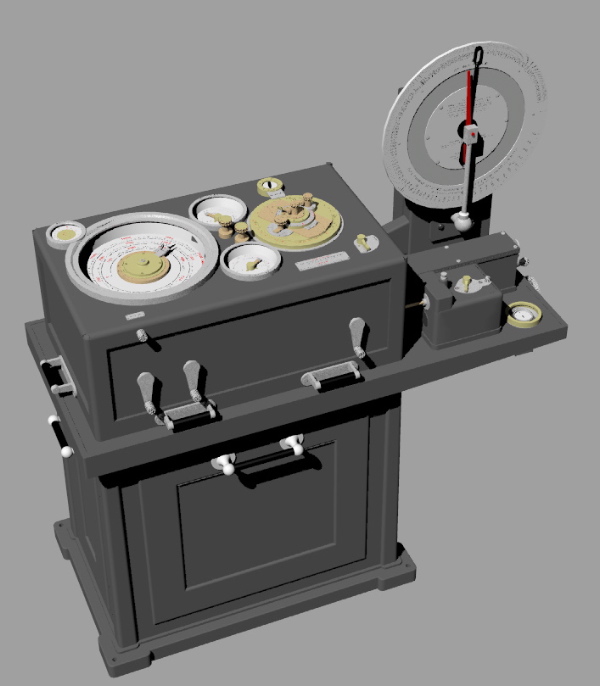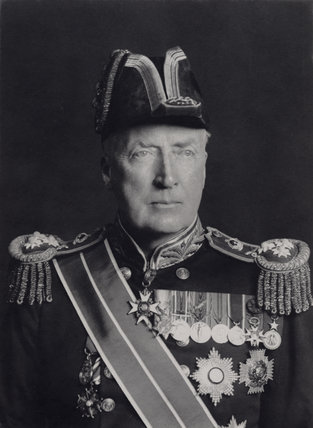
A patent drawing for the Range Keeper, Hannibal Ford's analog fire control computer.
The history of information technology has a way of repeating itself. Every era's corporate competitors elbow each other for success, try to better the other's ideas, and sometimes just plain steal from one another. In that light, it's no surprise that the battles of today’s technology giants may have been foretold by another wave of innovatorsâ€"those at the turn of the 20th century, when electricity was new and computing was done with real machines. Think the kind with gears, cams, and shafts.
The startup culture created by the electrification and communications booms of the late 19th and early 20th centuries produced a generation of engineers looking for the next big thing. But their similarities with today's tech leaders go beyond the fact that "a generation of engineers looking for the next big thing" could just as easily describe anyone at Google, Facebook, or maybe even SnapChat. While researching the recent Ars report on Naval analog computers, parallels immediately revealed themselves. The behavior of the men who pioneered this analog computing eerily mimics actions we're more familiar with from Steve Jobs, Bill Gates, Larry Page and Sergey Brin, and the rest of today’s tech pantheon. These early engineers were, if you’ll pardon the phrase, the Pirates of Analog Alley.

Kelvin figured out a number of things about long-distance telecommunications. He developed a model for the bandwidth capacity of undersea cables and invented equipment to automatically send and record messages. Enriched by (and knighted for) his success with trans-Atlantic telegraph cables and equipment, Kelvin was perpetually tinkering. In 1871, he perfected a little project his older brother had been working on: the “integrating machine,†or differential analyzer.
This device would be the basis of Kelvin’s machine to calculate tide tables. Nearly 60 years later, the same principles would be used at MIT to create the first machine called a differential analyzer, which is used for calculating complex differential equations. The integrating engine would be in the back of Kelvin’s mind 15 years later when, as a board member for Linotype & Machinery Co. Ltd., he had a conversation with the company’s managing director, Arthur Pollen.
As recounted by his son Anthony Pollen in the book The Great Gunnery Scandal: The Mystery of Jutland, Pollen traveled to Malta in 1900, where he was invited aboard a Royal Navy ship to witness gunnery exercises. When he returned to England, he told Kelvin how horrifically inaccurate the ships' big guns were. In the course of the conversation, Lord Kelvin mentioned an analog computer he had worked on and how it could probably be used to do the ballistic calculations required to make the guns hit their targets.
Pollen took the idea and ran with it. With a singular passion rivaling Steve Jobs', Pollen spent the next eight years developing what he would call the Argo Aim Correction System. Its integrating core concept was passed from Kelvin's brother to Kelvin and now finally to Pollen. A 3D model of the Argo Clock, the heart of Arthur Pollen's fire control system.
Pollen’s Argo was supposed to provide a totally integrated system. It would use electromechanical mechanisms to transmit range and bearing data to a computer, then send the proper elevation and bearing orders back to the gunners’ mates in a similar way. If an enemy ship disappeared from view because of fog or a smoke screen, gunners would still have a good idea of where to aim. And the centerpiece of Pollen’s system was the Argo Clockâ€"the world’s first electrically powered analog computer, which continuously analyzed the relative motion between the ship it was aboard and the target.
One of the Argo system’s major innovations was its use of gyroscopes, both for calculating directional information and as a “stable verticalÂÂÂ," sensing the ship’s pitch and yaw and adding that to the calculations. Pollen spent a great deal of development effort on his own gyroscope systemsâ€"based on early torpedo stabilizer systemsâ€"to create the stabilizing element that handled movement in the vertical plane. But unfortunately for Pollen, he became a groundbreaker in computing in another wayâ€"having his operating system ripped off. Sir Frederic Charles Dreyer recognized the best parts of Pollen's Argo system and copied them off for his own.
In 1906, as Pollen was coming close to his goal, he met with a Royal Navy officer to present his work. That officer, Lt. Frederic Dreyer, was the assistant to then-Rear Admiral John Rushworth Jellicoe, the Royal Navy’s Director of Naval Ordnance and Torpedoes (DNO). Dreyer was an up-and-comer, according to most accounts (including Anthony Pollen's), and he had a few ideas about fire control of his own. Dreyer would essentially become the Bill Gates to Pollen's Jobs. While the Royal Navy continued to buy systems from Pollen to test, Dreyer went off and designed his own fire control computer. That system, called the Dreyer Fire Control Table, had the benefit of Dreyer’s experience as a gunnery officer as well as his ongoing experience dealing with Pollen.
Originally, according to Norman Friedman's book Naval Firepower, Dreyer saw his system as something for individual turrets to help them stay on targetâ€"essentially an add-on to the Argo system. But the more time he spent with Pollen, the more he started to believe his system could be competitive with it. He took his design to his own personal Paul Allen-like figure: Keith Elphinstone, the chief designer and director at the naval instrument manufacturer Elliot Brothers. The two worked in the Argo's system of automatically transmitting bearing and range data from a stabilized rangefinder.
As much as the Dreyer Table borrowed from the Argo, it was also less integrated than Pollen’s system and more open to tinkering and hacking, since it was essentially a bunch of hardware bolted onto an open metal table. It was the Windows PC to Pollen’s carefully crafted Macintosh-like concept for the Argo. Dreyer's creation also preserved a place for human skill, and it was the product of an insiderâ€"as opposed to that of some upstart entrepreneur.
Dreyer still worked for the DNO as the officer responsible for fire control systems. He was able to stack the deck some against Pollenâ€"though Pollen did enough of that himself, according to John Brooks' account in the book Dreadnought Gunnery and the Battle of Jutland. Equipped with his own reality distortion field, Pollen claimed that his system was accurate "to 1/10 of one percent"â€"an accuracy that would have required the information from the spotting system to be transmitted and turned into gun orders in milliseconds. Pollen was slow in delivering and combative in negotiations on price, plus much of his early hardware was, to put it kindly, idiosyncratic. For example, there was one feature of the Argo Clock that wasn't borrowed by the Dreyer Table: the Argo system couldn't automatically track a target while the ship it was on was turning.
So while Pollen sold a number of his full systems for installation on Russian warships and sold parts of systems to the Royal Navy, Dreyer’s hack of Pollen’s system became the standard for the British fleet just before the start of World War I. And as it became more and more apparent how badly he had been screwed by Dreyer, the tenor of Pollen’s relationship with the Navy soured. He was denied a special relationship with the Navy and was relegated to the same treatment as other inventors. Pollen's passion, pushiness, and eventual rage saw to it that he was eventually pulled from the approved contractor list all together. It led to a patent dispute that would be the gunnery equivalent of Apple vs. Microsoft.
No comments:
Post a Comment